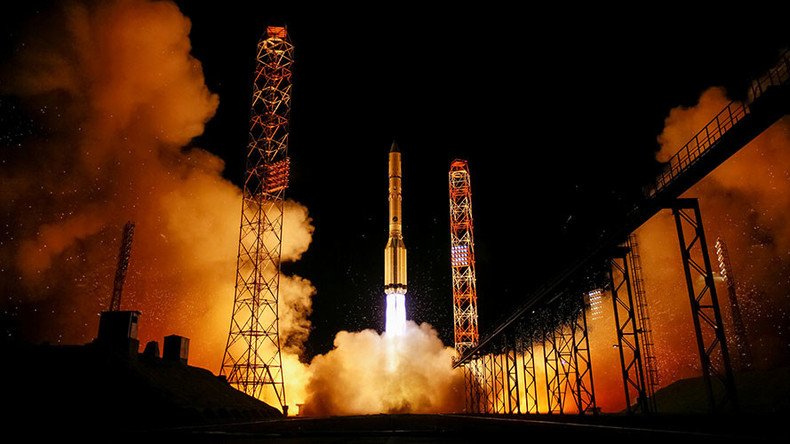Proton M lifts off with Spanish telecommunication satellite (VIDEO)

The International Launch Services venture has successfully sent the privately owned Spanish Amazonas 5 communications satellite into orbit using the iconic Proton M heavy lift launch vehicle.
“The Proton M launch vehicle, utilizing a 5-burn Breeze M mission design, successfully lifted off from Pad 39 at the Baikonur Space Center with the Amazonas 5 satellite on board,” Russian space agency Roscosmos said in a statement.
The Hispasat Group’s communications satellite is scheduled to be delivered into orbit some 9 hours 12 minutes after lift-off and a “standard ascent profile.”
“From this point in the mission,the Breeze M performs planned mission maneuvers to advance the orbital unit first to a nearly circular parking orbit, then to an intermediate orbit, followed by a transfer orbit, and finally to a geosynchronous transfer orbit,” Roscosmos explained.
Орбитальный блок в составе #Amazonas5 и разгонного блока «Бриз-М» выведен на суборбитальную траекторию. Отделение в 07:35 мск 12 сентября. pic.twitter.com/yPDRQI8h4V
— РОСКОСМОС (@roscosmos) September 11, 2017
The Amazonas 5 satellite operated by Spain’s Hispasat Group was manufactured by the US firm, Space Systems Loral. The satellite, which has a projected lifetime of 15 years, was built on a SSL 1300 platform which allows it to be used to provide television and communication services in South and Central America.
“The satellite will be located at 61°W and is based on the highly reliable SSL 1300 platform, which provides high power and the flexibility to support a broad range of applications and technology advances,” Roscosmos said.
#Amazonas5: есть сброс створок головного обтекателя. pic.twitter.com/pM5KPDI3mO
— РОСКОСМОС (@roscosmos) September 11, 2017
“With this new satellite, the HISPASAT Group will be able to meet growing satellite capacity demand, mainly for satellite television platforms in Latin America and Brazil. Moreover, it has Ka band capacity to deal with new Internet connectivity services,” the Hispasat Group claims.
READ MORE: Russian Proton-M rocket takes US satellite into orbit (VIDEO)
Over the next few weeks, the satellite will test technology from the geostationary orbit. “Once complete, the satellite will be placed in its definitive orbital position,” Hispasat said.
#Amazonas5: есть отделение первой ступени. Двигатели второй ступени вышли на режим. Полет нормальный. pic.twitter.com/tJEdkQw1RR
— РОСКОСМОС (@roscosmos) September 11, 2017
Monday’s mission was Proton-M’s third launch since the beginning of the year. The first launch took place on June 8, when Proton M was used to deliver the US EchoStar 21 satellite into space. On August 17, a heavy-lift rocket blasted the Russian military Blagovest 11 satellite into orbit.












